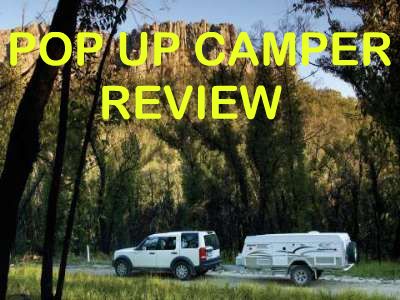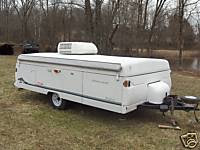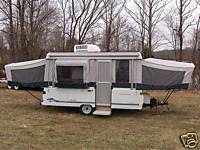 Saudi Arabia is a country that is just beginning to open up to tourists and it has so much to offer and whether you are a tourist or are working in Saudi Arabia, there are so many natural attractions to visit, form the deep coral filled seas to the cool mountainous peaks, from the dry arid deserts to the lush oasis surrounded by palm trees. Permission may be needed to travel to some of these areas but it is well worth it as very few people actually get to see these places.
Saudi Arabia is a country that is just beginning to open up to tourists and it has so much to offer and whether you are a tourist or are working in Saudi Arabia, there are so many natural attractions to visit, form the deep coral filled seas to the cool mountainous peaks, from the dry arid deserts to the lush oasis surrounded by palm trees. Permission may be needed to travel to some of these areas but it is well worth it as very few people actually get to see these places.Scuba Diving & Snorkeling
Camping on the shores of the Red Sea and diving in its warm waters year round is one of the main attractions if you are visiting or live on the west coast. Unlike the Egyptian side of the Red Sea, where the reefs are literally dived out, the Saudi side has pristine virgin reefs
 due to the small number of people who dive there.Rabigh and Shuwaiba beaches are two great spots to head for the weekend in your pop up camper or just pitch a tent or better still, sleep under the stars.Reef sharks, manta rays, moray eels, lion fish, black carol and a vast array of other fish, including the humpback wrasse are seen on a regular basis when you are diving or snorkeling in the warm waters of the Red Sea. As it is a major shipping channel and many war ships were destroyed there in the wars you'll find numerous shipwrecks to dive on. If you are not a diver, snorkeling is just as fun and the vast array of different corals and fish life will keep you in the water for hours.Diving off the main corniche in Jeddah offers some spectacular cave diving but the authorities may not be too keen on you diving there.
due to the small number of people who dive there.Rabigh and Shuwaiba beaches are two great spots to head for the weekend in your pop up camper or just pitch a tent or better still, sleep under the stars.Reef sharks, manta rays, moray eels, lion fish, black carol and a vast array of other fish, including the humpback wrasse are seen on a regular basis when you are diving or snorkeling in the warm waters of the Red Sea. As it is a major shipping channel and many war ships were destroyed there in the wars you'll find numerous shipwrecks to dive on. If you are not a diver, snorkeling is just as fun and the vast array of different corals and fish life will keep you in the water for hours.Diving off the main corniche in Jeddah offers some spectacular cave diving but the authorities may not be too keen on you diving there.Wadis and Deserts
When you think of Saudi Arabia you think dessert and much of it is, with the high moving sanddunes or the flat rocky landscapes but every now and again, as you are driving across the vast desert landscape you will come across something very unexpected. One of these is the
 Wahba Crater, east of Jeddah, a large volcanic crater formed thousands of years ago, and now offering a great camping spots around the rim of the crater.You can climb down into the crater where a large salt pan covers most of the bottom- it's a bit of a scramble but worth it.Travelling northeast of Jeddah you will find Marble Mountain rising two to three hundred feet above the sandy plain. It was quarried by an Italian company that went broke, so you will find large blocks of white marble scattered around the mountain together with pieces of abandoned equipment. You can camp next to the mountain although you may want to find a more
Wahba Crater, east of Jeddah, a large volcanic crater formed thousands of years ago, and now offering a great camping spots around the rim of the crater.You can climb down into the crater where a large salt pan covers most of the bottom- it's a bit of a scramble but worth it.Travelling northeast of Jeddah you will find Marble Mountain rising two to three hundred feet above the sandy plain. It was quarried by an Italian company that went broke, so you will find large blocks of white marble scattered around the mountain together with pieces of abandoned equipment. You can camp next to the mountain although you may want to find a more  sheltered place from the hot sun.As you travel across the vast expanse of Saudi Arabia the sun shimmers of the desert floor and mirages start to appear before your eyes as the hot arabian sun beats down on you. Then all of a sudden an oasis will appear offering a bit of respite under the palm trees and amongst the reeds and bull rushes in the pools of water.Wadi Mur and wadi Dribble are two such examples and you can camp anywhere around the edges of the oasis. Plenty of birdlife and different flora can be seen around these areas. Make sure you take your mosquito net and repellent as they
sheltered place from the hot sun.As you travel across the vast expanse of Saudi Arabia the sun shimmers of the desert floor and mirages start to appear before your eyes as the hot arabian sun beats down on you. Then all of a sudden an oasis will appear offering a bit of respite under the palm trees and amongst the reeds and bull rushes in the pools of water.Wadi Mur and wadi Dribble are two such examples and you can camp anywhere around the edges of the oasis. Plenty of birdlife and different flora can be seen around these areas. Make sure you take your mosquito net and repellent as they  can be very annoying.On the escarpment above Jeddah is Harithi, which is a good place to go in the hot summer months are the temperature up here is alot cooler, even cold at times. There are some good walks and great viewing from the high pinnacles. Some old stone buildings are still visible amongst the stony hills and lavender bushes and you can see the occasional bedouin roaming over the hills, gun in hand.In the southern region of Saudi Arabia is Abha and the Asir national park where you can find some good camping areas and plenty of places to explore amongst the mountains and forested hills. The suks in Abha are well worth a look and you can pick up some good bargains, be it knives, baskets or jewellery or the colourful
can be very annoying.On the escarpment above Jeddah is Harithi, which is a good place to go in the hot summer months are the temperature up here is alot cooler, even cold at times. There are some good walks and great viewing from the high pinnacles. Some old stone buildings are still visible amongst the stony hills and lavender bushes and you can see the occasional bedouin roaming over the hills, gun in hand.In the southern region of Saudi Arabia is Abha and the Asir national park where you can find some good camping areas and plenty of places to explore amongst the mountains and forested hills. The suks in Abha are well worth a look and you can pick up some good bargains, be it knives, baskets or jewellery or the colourful  materials that the flowermen wear.Further to the east is Al Hofuf, which has some good little sores circling the Turkish fort in the middle of town. You will need to have a good rummage through all the clutter to find something of value. Cheap, unglazed pottery can be picked up near some limestone caves found on the outskirts of Hofuf. Hofuf has a camel and goat market every Thursday, worth a look.A trip to the camel races is quite an experience. The young arab jockeys are velcroed to the camels to stop them from falling off. Take a scarf to cover your face as it can be very dusty.
materials that the flowermen wear.Further to the east is Al Hofuf, which has some good little sores circling the Turkish fort in the middle of town. You will need to have a good rummage through all the clutter to find something of value. Cheap, unglazed pottery can be picked up near some limestone caves found on the outskirts of Hofuf. Hofuf has a camel and goat market every Thursday, worth a look.A trip to the camel races is quite an experience. The young arab jockeys are velcroed to the camels to stop them from falling off. Take a scarf to cover your face as it can be very dusty.Medain Saleh
Medain Saleh, to the north of Medina, was built by the Nabetaeans, who built Petra in Jordan. Tombs cut out of the weathered sandstone cliffs are seen everywhere and there are some interesting sculptures that have been formed by the erosion of the wind and sand over many years. Some of the tombs contain many separate chambers (which you can climb into) to cater for all the members of the family. You can camp in the vicinity of Medain Saleh on the flat
 plateaus. You will need to get permission to enter the area.Before you get to Medain Saleh it is worth visiting an old Jewish settlement in Khaybar. It was built in BC times around an oasis but most of the village is still intact to some degree as is well worth looking around.Along the road to Medain Saleh you can see evidence of the Hejaz Railway, the rail track that "Lawrence of Arabia" supposedly had blown up. Sandstone rest homes and forts are scattered along the line which is barely noticeable now. You can camp just about anywhere in this area.
plateaus. You will need to get permission to enter the area.Before you get to Medain Saleh it is worth visiting an old Jewish settlement in Khaybar. It was built in BC times around an oasis but most of the village is still intact to some degree as is well worth looking around.Along the road to Medain Saleh you can see evidence of the Hejaz Railway, the rail track that "Lawrence of Arabia" supposedly had blown up. Sandstone rest homes and forts are scattered along the line which is barely noticeable now. You can camp just about anywhere in this area.










